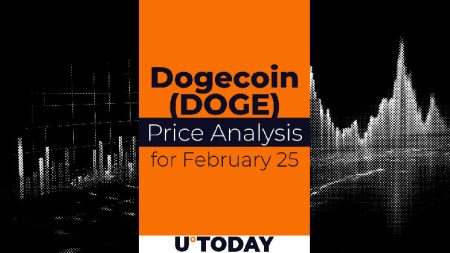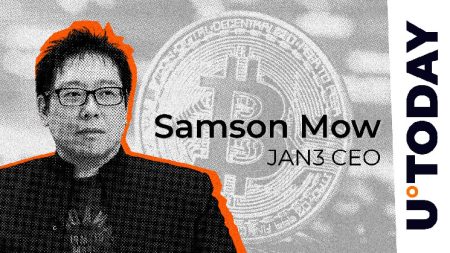The Rise of Blockchain and Smart Contracts in Healthcare: A Growing Revolution
Market Growth and Projections for Healthcare Smart Contracts
The integration of blockchain technology and smart contracts into the healthcare sector is gaining momentum, with projections indicating a significant surge in market value. According to a report by Research and Markets, the global healthcare smart contracts market, currently valued at $3.2 billion, is expected to grow to $10.1 billion by 2030. This remarkable growth is driven by a compound annual growth rate (CAGR) of 21.4%, reflecting the rapid adoption of Web3 technologies and their transformative potential in healthcare. Smart contracts, which are digital agreements stored and replicated on a blockchain, are being increasingly utilized to automate medical transactions and data exchanges. This shift is not only streamlining operations but also enhancing transparency, security, and efficiency in the healthcare industry.
Drivers of Growth: Innovation, Transparency, and Efficiency
The primary driver of this growth is the rapid innovation in Web3 technologies, which is unlocking new use cases for smart contracts in healthcare. One of the most significant applications is in payment systems, where smart contracts eliminate the need for intermediaries. This reduces delays, fraud, and high transaction fees, making payments more efficient and secure. Patients and insurance companies benefit from real-time access to detailed cost breakdowns and immutable records of medical processes, ensuring transparency and trust. Additionally, smart contracts are enabling value-based care reimbursement models, where payments are tied to patient outcomes, fostering a more patient-centric approach to healthcare.
Beyond payments, smart contracts are being leveraged to enhance supply chain management and regulatory compliance. The integration of Internet of Things (IoT) technologies with blockchain is proving particularly valuable for tracking temperature-sensitive shipments and verifying pharmaceutical processes. Other promising applications include improving interoperability between healthcare providers, personalizing treatment plans, automating claim adjudication, and securely sharing health records. As these technologies mature, they are poised to address some of the most pressing challenges in healthcare, from data security to operational inefficiencies.
The Global Landscape: Leaders and Emerging Markets
The U.S. is expected to lead the healthcare smart contracts market, followed closely by China and the Asia-Pacific region. Countries like Canada, Germany, and Japan are also anticipated to increase their market share, driven by supportive government regulations and public-private partnerships. However, the growth is not limited to developed economies. India, for instance, is making significant strides in adopting blockchain for medical applications, aligning with its broader goal of integrating the technology across its economy. Despite the optimism, challenges such as data breaches, scalability issues, and the high cost of implementation for small-scale healthcare providers remain concerns that must be addressed.
Estonia’s Pioneering Role in Digital Health and Blockchain
Estonia, a pioneer in digital health, is emerging as a key player in the global healthcare innovation landscape. The country is actively pursuing partnerships with Gulf states, with the United Arab Emirates (UAE) being a focal point. At the Arab Health 2025 conference in Dubai, Estonia showcased its cutting-edge health technologies, including blockchain-based solutions for secure and efficient data exchange. Estonia’s Ambassador to the UAE, Maria Belovas, highlighted the potential of these technologies to transform healthcare in the Middle East, particularly in telemedicine and disaster response. The country’s exhibition featured innovative tools such as MDSC Systems, a lightweight, portable diagnostic device designed for remote and disaster zones, and Migrevention, an AI-powered headache diagnostic tool. These advancements underscore Estonia’s commitment to leveraging AI and blockchain to revolutionize healthcare.
Embracing Emerging Technologies: Estonia’s Strategic Approach
Estonia’s forward-thinking approach to healthcare is complemented by its broader embrace of next-generation technologies. The country has recently doubled its investments in AI and enterprise Web3 applications, signaling a strategic shift toward digital transformation. Estonia has also entered into a high-profile collaboration with the Maldives, focusing on AI, renewable energy, and central bank digital currencies (CBDCs). While embracing innovation, Estonia is also taking a cautious approach to ensure compliance and security. The government has tightened regulations on digital asset service providers and is exploring the adoption of the digital euro. These efforts reflect Estonia’s balanced approach to leveraging emerging technologies for economic growth and societal benefit.
The Future of Healthcare: Blockchain, AI, and Beyond
The integration of blockchain, smart contracts, and AI into healthcare is not just a trend but a fundamental shift in how the industry operates. As these technologies continue to evolve, they hold the promise of creating a more connected, secure, and patient-focused healthcare system. The rise of smart contracts is particularly significant, as they enable decentralized, automated, and transparent solutions for a wide range of healthcare challenges. While challenges such as scalability and regulatory frameworks remain, the potential benefits of these technologies are immense. As countries like Estonia and industries like pharmaceuticals increasingly adopt blockchain and AI, the stage is set for a revolution in healthcare that prioritizes innovation, collaboration, and patient well-being. The future of healthcare is undeniably digital, and blockchain is at the heart of this transformation.















